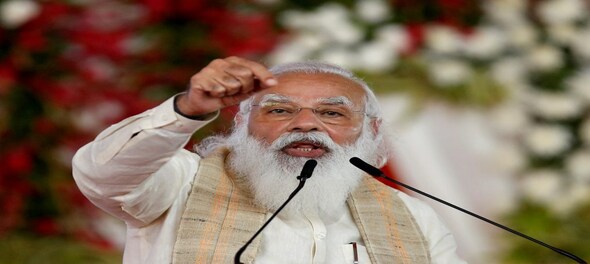
The recently launched Prime Minister Gati Shakti-National Master Plan (GS-NMP) for infrastructure Development could not have come at a more opportune time. This is in keeping with the PM’s announcement in his Independence Day speech. A robust infrastructure holds the key if we are to meet several ambitious targets. We aim to become a $5 trillion economy by 2024-25, increase exports of goods and services to $1 trillion and improving domestic capital goods manufacturing output to $101 billion, both by 2025.
A little background to put matters in perspective is necessary. Poor infrastructure has always been a challenge for the country. It was universally acknowledged that this was an impediment in the growth of the country.
The Ministry of Commerce had established a High-Level Advisory Group (HLAG) under the Chairmanship of Surjit S. Bhalla to ‘assess the global environment and make recommendations for boosting India’s share and importance in global merchandise and services trade’.
The HLAG had in its September 2019 report focused on various specific sectors with export potential. A common concern across sectors was the inadequate infrastructure which was acting as a drag on achieving full export potential.
A CII-Arthur D Little study in December 2020 ‘Reimagining India’s supply chain’ points out India’s supply chain and logistics industry is one of the largest globally with a logistics industry size of USD 215 billion and growing at a CAGR of 10.5 percent. Despite its size there have been serious disruptions caused by poor infrastructure support.
This has contributed to a staggering logistics cost of 14 percent of GDP as compared to the global average of appropriately 8 percent. As the study points put this creates a competitiveness gap of $180 Billion for India which is likely to increase to $500 billion by 2030.
Niti Aayog had in a separate study in June 2021 ‘Fast Tracking Freight in India - A Roadmap for Clean and Cost-effective Goods Transport ‘ in association with RMI and RMI India focused on the importance of the logistics sector. The report highlighted that logistics sector represented 5 percent of India’s GDP and employed more than 2.2 crore people. The report points out that India handles 4.6 billion tonnes of goods each year costing a humongous Rs 9.5 lakh crore.
The Ministry of Commerce had in a separate study in October 2021 with the acronym LEADS (Logistics Ease Across Different States) covered similar ground. Thus, the report emphasizes the fact that while India is the world's fifth-largest economy in terms of nominal GDP, efficient logistics are a key catalyst for enhancing competitiveness.
The Study suggests improving supply chain efficiencies and reducing logistics costs are fundamental to India capitalizing on this strategic shift and meeting the well-defined aspiration to become a US$ 5 trillion economy by 2025.
Thus, there here has been a common recognition of the problem as the plethora of studies have brought out. Unfortunately, there has been precious little coordination between ministries and schemes. The result was stilted progress and wasteful expenditure. With increased focus on infrastructure a holistic planning and outlook was essential. It is in this background that the announcement of the GS-NMP has to be seen.
The GS-NMP which was launched by the Prime Minister on October 13 and approved by the Cabinet Committee on Economic Affairs on October 21 should, as the press note says ‘herald a new chapter of governances’ and bring 16 ministries including Railways and Roadways together for integrated planning and coordinated implementation.
The PM Gati Shakti approach is said to be based on six pillars.
Comprehensiveness
by including all the existing and planned activities of various Ministries and departments under one umbrella.
Prioritization by cutting across sectoral interactions
Optimisation with a focus on ensuring optimum usage of resources and removing overlapping expenditure/plans.
Synchronization so that the work of various Ministries does not happen in standalone silos.
Analytical with all data available of plans /schemes in one place for a proper analysis and
Dynamic with all Ministries and departments able to visualize and monitor progress across projects.
The GS-NMP is to subsume the National Infrastructure Pipeline announced in 2019.The scheme aims to cut down logistic costs, increasing cargo handling capacity and reducing turnaround time at ports.11 industrial corridors and 2 new defence corridors are to be set up. It aims to expand the national highway network and create more airports.
The Mumbai Port Trust was the first off the blocks and has announced several multi-modal connectivity projects. The aim being to increase cargo capacity, have additional coastal facilities, improve rail connectivity and promote tourism.
Subsequently the Government has earlier this month announced the constitution of a 20-member empowered group of secretaries to monitor development and implementation of the PM GM-NMP.
The specific terms of reference with an emphasis on reviewing progress and coordination will play a key role in fast forwarding India’s journey towards becoming the third largest economy. It is imperative that project overruns resulting in increased costs which has been the bane of most public sector projects in the country are strictly controlled.
Conceptually GS PMP is a much-needed initiative. The proof will lie in its implementation.
— Najib Shah is the former chairman of the Central Board of Indirect Taxes & Customs. The views expressed are personal.
Read his other columns here
(Edited by : Anshul)
First Published: Nov 13, 2021 8:48 AM IST
Check out our in-depth Market Coverage, Business News & get real-time Stock Market Updates on CNBC-TV18. Also, Watch our channels CNBC-TV18, CNBC Awaaz and CNBC Bajar Live on-the-go!


BJP is planning to ban RSS, says Shiv Sena (UBT) chief Uddhav Thackeray
May 18, 2024 8:01 PM
Punjab Lok Sabha elections: Complete list of Congress candidates
May 18, 2024 4:08 PM
Punjab Lok Sabha elections: Check full list of AAP candidates and constituencies
May 18, 2024 12:59 PM
PM Modi, Rahul Gandhi election rallies in Delhi today: Here are the routes to avoid
May 18, 2024 11:28 AM

